A lot of producers and artists are using AI to help enhance their tracks and workflows, and that’s increasingly valuable, no doubt about it.
But, if you’re using artificial intelligence, you need to understand the business side of AI in music.
This way, you’ll be able to make real money, avoid any legal headaches, and actually protect the work you’re putting in.
Plus, you’ll be able to scale faster, build a stronger brand, and unlock long-term opportunities in the music industry that go way beyond just uploading beats.
That’s why I’m breaking down everything you need to know, like:
- Monetizing any AI-generated music creation ✓
- Streaming rules and platform policies ✓
- Licensing, sync placements, and new creative possibilities ✓
- Selling AI loop kits and sample packs ✓
- Creating AI-powered tools for other artists ✓
- Turning AI music tools into services ✓
- Legal ownership of AI-generated songs ✓
- How AI in music production affects copyright ✓
- Music market/music business/promotional campaign techniques ✓
- Using AI to track listening habits for MAX growth ✓
- Real examples of smart branding with AI-generated content ✓
- Much more about the business side of AI in music ✓
Whether you’re a producer, sound designer, or artist, knowing all about the business side of AI in music is a real game-changer.
This way, you’ll be able to freely push your sound/music creation, make a real name for yourself, and take on pro-level projects all day.
And, you’ll never have to worry about getting flagged for copyright infringement, losing your rights, or missing out on real income streams ever again.
Table of Contents
- Why Do I Need to Understand the Business Side of AI in Music?
- Making Money with AI in Music Production
- AI Tools That You Should Know About
- The Absolute Best AI Plugins in the Industry
- Legal Stuff You CANNOT Ignore
- Future-Proofing Your AI Music Business/AI-Generated Content
- Staying Ahead of New AI Music Tools/AI Technology
- Final Thoughts about Music AI
Why Do I Need to Understand the Business Side of AI in Music?
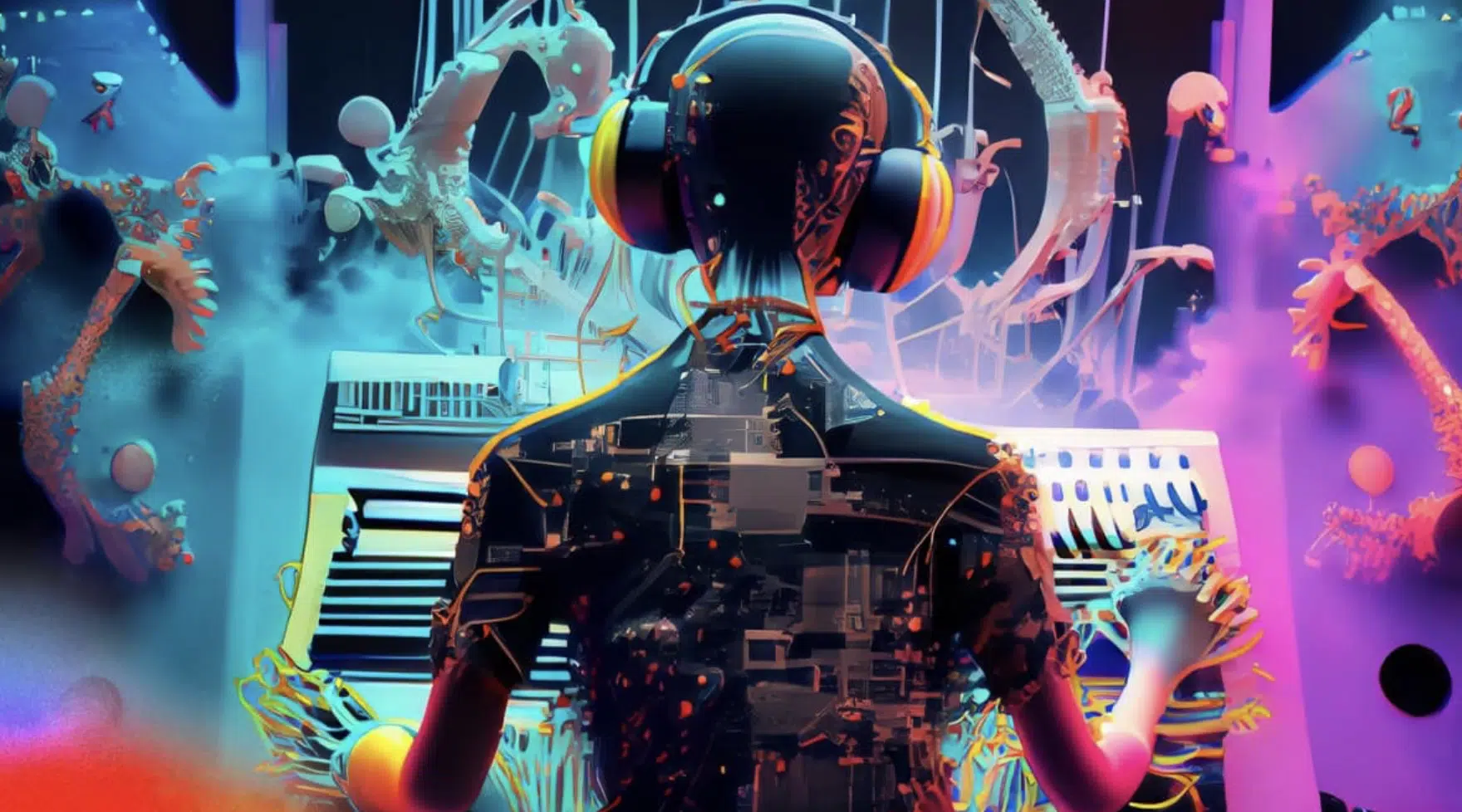
These days, AI in music production isn’t just a cool trick to speed things up 一 it’s a full-on revolution in how we produce music, sell it, and build careers around it.
The more we lean into AI music tools, the more we need to understand the backend:
- Who owns what?
- How can you monetize it?
- What risks are you taking by using AI-generated sounds in our projects?
Whether you’re using AI to generate melodies, build drum loops, or even mix and master tracks, it all ties into the business side of AI in music.
And if you’re not thinking like a business-savvy music creator, you might leave a lot of opportunity (and money) on the table, and nobody wants that.
That’s especially true in today’s industry, when AI music production is being baked into just about every part of the workflow.
Don’t worry if it sounds a little confusing right now…
I’ll be breaking down everything you need to know about the business side of AI in music so you really have a solid understanding.
Making Money with AI in Music Production
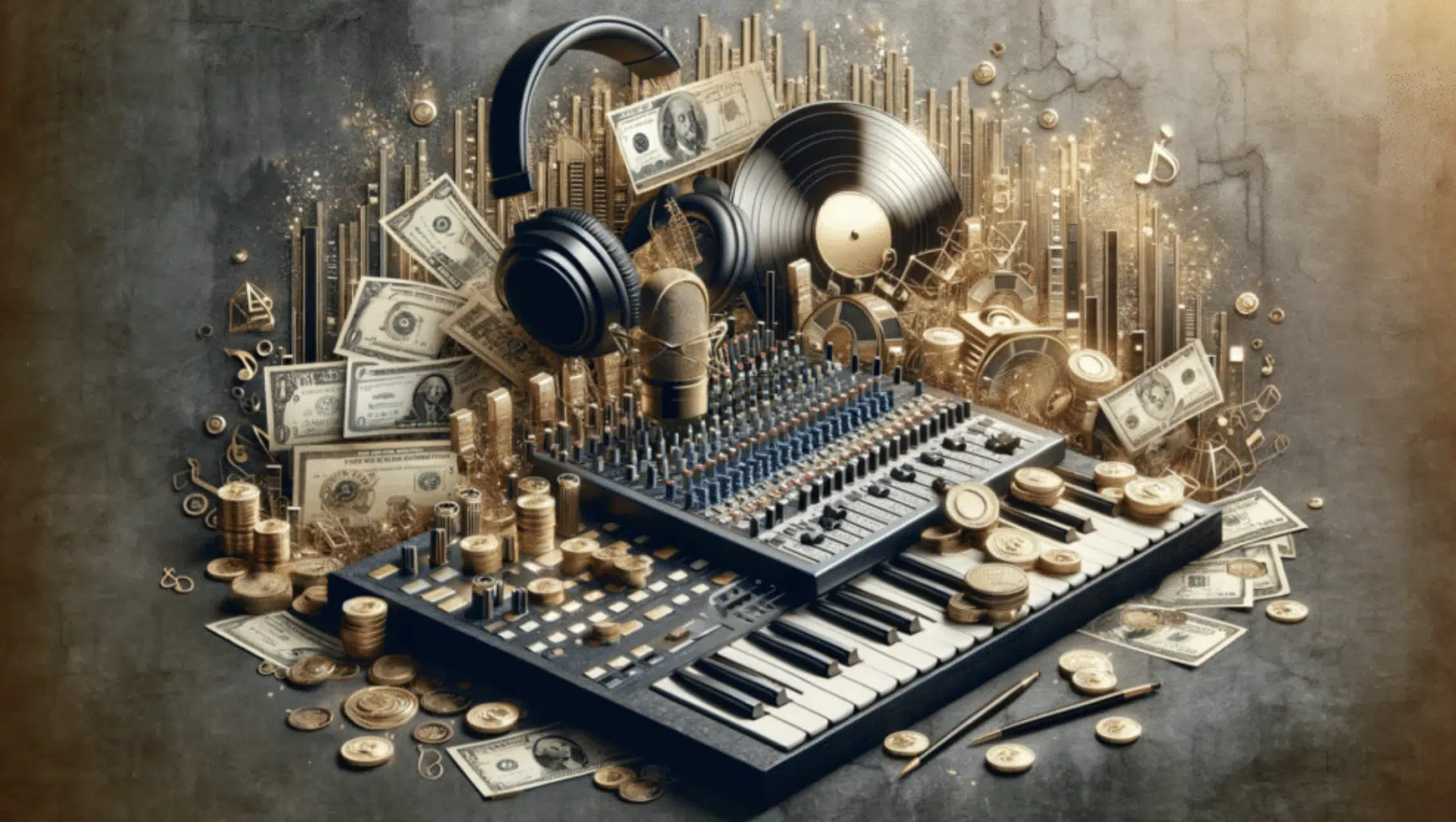
There’s a lot of hype around AI plugins and automated tools, but the real value shows up when we figure out how to actually make money with them. And that’s where the business side of AI in music comes into play. So, let’s break it down, starting with some of the easiest and most direct ways to turn your AI music production skills into big money.
-
Uploading AI Music to Streaming Platforms
Uploading your AI-generated music to streaming platforms like Spotify, Apple Music, and Amazon Music is totally doable.
However, there are a few things you’ve gotta be aware of first.
Most major platforms allow AI in music production, but some require that there’s human input involved — meaning the AI can’t do 100% of the work if you’re trying to monetize.
For example, Apple Music and Spotify both currently allow AI-generated songs as long as they’re not entirely AI-composed with zero human involvement.
This means you should still be arranging, editing, or mixing music yourself.
Doing this gives your music that human creativity edge, while also keeping things compliant with the current rules.
One smart move is making sure you’re listed as the primary artist on the metadata and not crediting the AI model itself.
This helps keep you in control of your royalty payments and prevents any confusion with AI-generated content.
And always remember that the business side of AI in music starts with knowing what’s allowed and what could come back to bite you later.
-
Selling AI Music Directly to Fans
Selling your AI-generated tracks directly to your audience is still one of the best ways to keep full control and maximize your profit.
Whether you’re offering exclusive tracks, beat packs, or even full albums, platforms like Bandcamp, Gumroad, and Shopify let you set your own pricing.
And, retain most of the earnings as well.
Let’s say you generate five unique lo-fi instrumentals using AI tools like Zen Master, then polish them with your own arrangement and FX…
You could bundle them as a “limited beat tape” and sell them for $20. If just 100 fans grab it, that’s $2,000 without needing to involve record labels or split royalties.
Because the business side of AI in music is all about ownership and independence, this kind of approach lets you skip middlemen and speak directly to your audience.
You keep the branding, the pricing, and the rights 一 that’s huge if you’re thinking long term in the music business.
-
Getting Placements in TV, Ads, or Games
Sync licensing is one of the smartest ways to monetize AI-generated music, especially if you’re targeting the music industry outside of just streaming.
Platforms like AudioSparx, Songtradr, and Artlist are starting to accept AI-generated songs as long as they involve some human creativity/human touch in:
- Arrangement
- Mixing
- Final delivery (mastering)
For example, layering vocals or acoustic textures over AI-generated stems can help pass licensing requirements and get around potential issues tied to AI-generated content.
Yes, it really is that simple, believe it or not.
Just make sure to label your tracks/music composition properly with mood tags like “dark trap tension” or “uplifting synth pop.”
This way, they’ll be way easier for music supervisors to find.
Getting this right is a huge part of the business side of AI in music because sync placements often pay upfront and keep paying through royalties.
-
Creating Sample Packs or Loop Kits with AI
Using AI tools like Chord Genie or Bass Dragon, you can quickly generate hundreds of original MIDI progressions, melody stems, or one-shot samples for custom loop kits.
A well-structured kit with 25 loops, 10 MIDI progressions, and a few vocal one-shots could sell for $30–$40 一 giving you recurring income with every download.
NOTE: Don’t forget to organize everything by key, BPM, and mood, and always include a short license PDF that covers AI-generated content usage rights.
You can host them on platforms like ADSR or your own Shopify store to stay independent and keep more of your cut.
These types of kits are becoming a major lane in the business side of AI in music, especially as more producers/human musicians look for quick-start creative fuel.
-
Using Artificial Intelligence to Offer Production Services
Offering AI-enhanced services is one of the fastest (and most successful) ways to build a side hustle in the music business while flexing your skills.
You can, for example, use Sound Doctor to do automated mixing, or generate custom chord ideas or other creative ideas using AI music tools like Chord Genie.
Then, sell those services on Fiverr or your own website.
Let’s say you charge $150 for a “beat starter pack” that includes a chord progression, AI drums, and a clean mix; deliver five of those in a week and you’ve got $750.
It’s super scalable, and it positions you as both a producer and a music creator bringing real opportunities to the table, not just sounds.
This kind of thinking is exactly what drives the business side of AI in music today.
AI Tools That You Should Know About

Once you understand how to monetize AI in your music production process, the next step is knowing exactly which tools give you an edge. If you want to stay competitive and dominate the competition, learning the right plugins is key to succeeding with the business side of AI in music, hands down.
-
Subscriptions, Packages & Custom Orders
One of the most consistent, stable ways to turn AI music tools into income is by building monthly subscription models, whether that’s:
- Exclusive beat drops
- Sample kits
- Melody packs
- Etc.
For example, you can use Chord Genie to generate a batch of 20 progressions and layer your own drums or FX, then drop them every month for $15–$30 via Patreon.
This kind of recurring income from the music created builds over time and adds structure to your workflow, which is huge for long-term growth in the music business.
Thinking like this (creating bundles that solve real problems for human artists and producers) is exactly how you win on the business side of AI in music.
-
Selling AI-Generated NFTs (Still Worth It?)
NFTs might not be the headline they once were, but they’re actually still a unique way to package AI-generated songs and music projects as exclusive collectibles.
You could, for example, drop a 1-of-1 beat tape made with AI and human layers, then mint it with unlockable bonus human-generated content like:
- Stems
- MIDI
- Even rights to remix
Platforms like Sound.xyz or Zora are still supporting music AI collectibles, and when bundled with community perks or merch, they can be profitable.
While the hype has cooled, the business side of AI in music includes staying open to certain formats like this that combine exclusivity with real creative value.
The Absolute Best AI Plugins in the Industry
When it comes to AI music production, a few plugins honestly feel like cheat codes.
Each one plays its own role in helping you master the business side of AI in music by making your workflow smoother, your tracks tighter, and your ideas easier to finish.
Chord Genie lets you knock out radio-ready chord progressions with one click, but it doesn’t stop there… You can fine-tune each chord voicing, inversion, and rhythm to match your vibe as well.

The built-in piano roll and saveable presets also give you complete control (great for all genres).
It’s perfect if you’re stuck in the idea stage and need something fresh to flip into full tracks without losing creative control.
Bass Dragon is the first-ever genre-specific AI bassline generator, and it’s honestly a real game-changer if you hate spending hours locking in low-end.
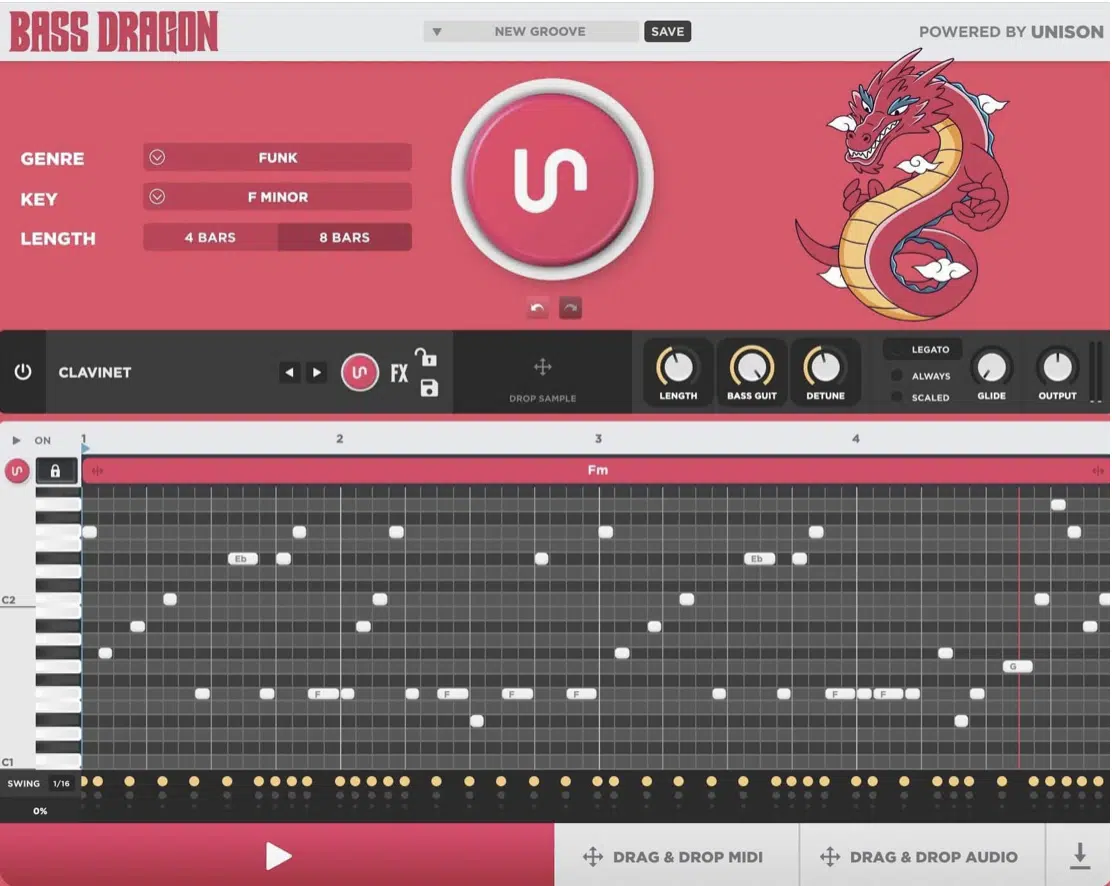
You just pick your key and genre, and it’ll give you pro-sounding basslines instantly, plus it comes with 200 presets and its own built-in synth.
And the coolest part is you can even load in your own samples and let it generate patterns around them 一 so it’s not just about speed, it’s about flexibility too.
Then we have Drum Monkey, which makes building drums actually fun again.
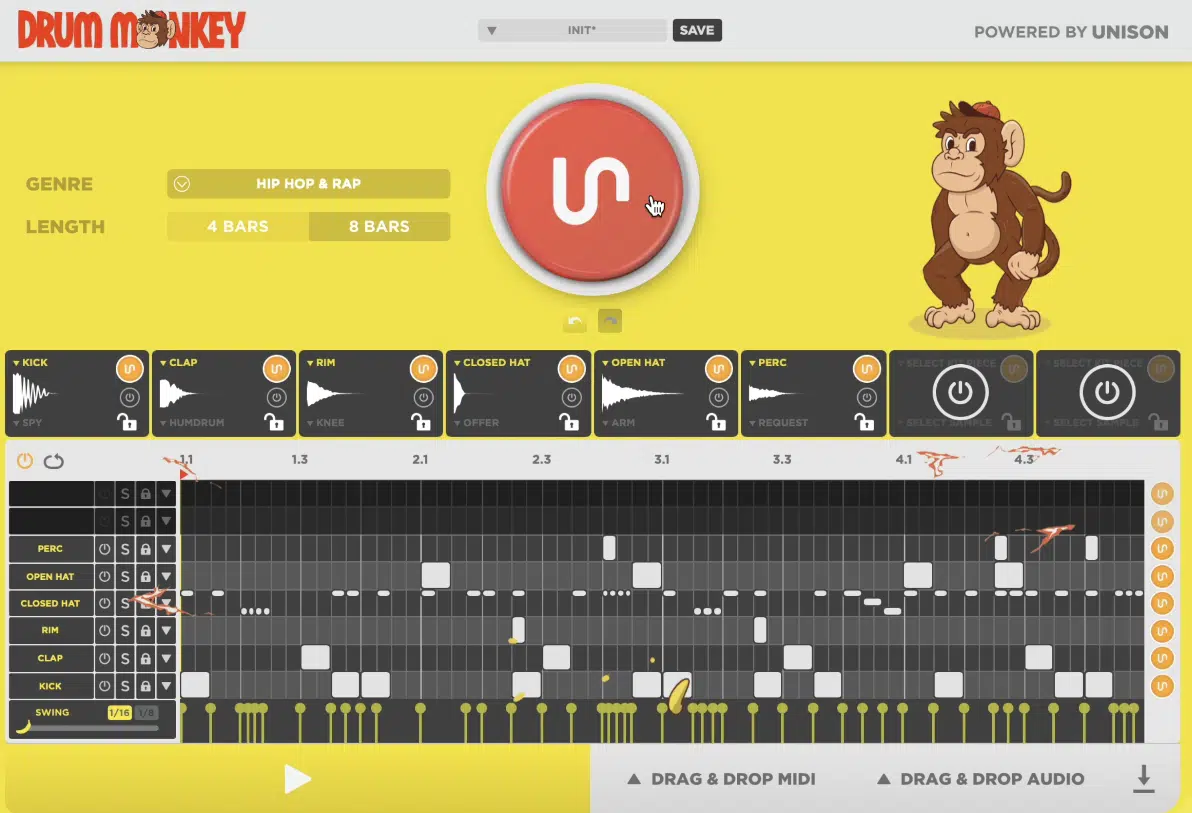
Instead of dragging loops and hoping they work, you can instantly generate full-on drum grooves that are clean, punchy, and ready to drop in.
You can lock certain elements, like your snare, then randomize the rest until the bounce feels right.
It also gives you control over velocity, groove, and even humanization so your drums don’t sound robotic, which is super important if you care about that swing.
If you’re trying to master the business side of AI in music, these plugins help you move faster, create more original content, and stop overthinking the technical stuff.
It’s all about keeping your workflow creative, efficient, and built for today’s music industry, and with tools like these, you’re already ahead of the curve.
Download The Best AI Plugins In The Game
Legal Stuff You CANNOT Ignore
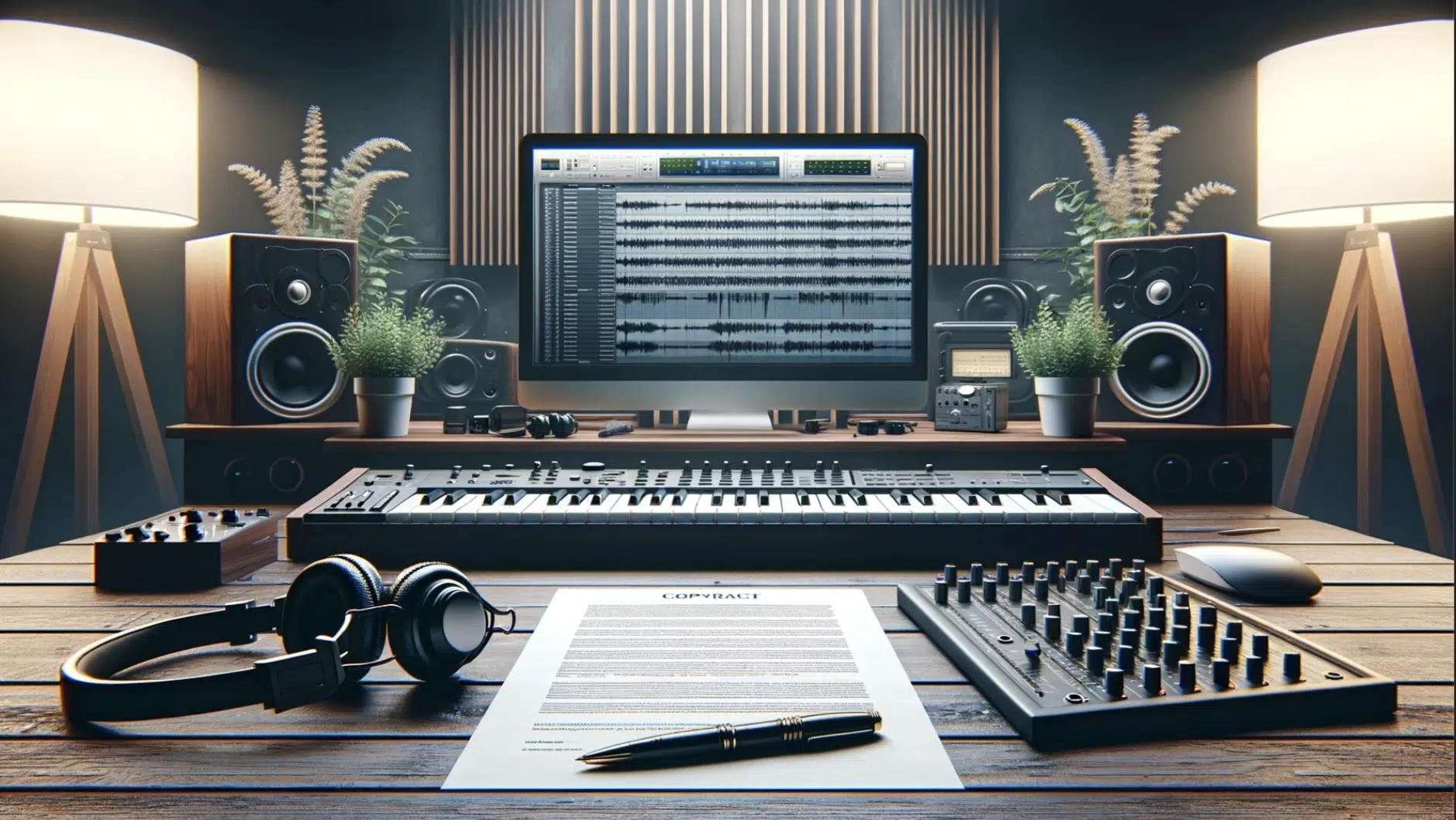
Now that we’ve looked at how to monetize your output, there’s another part of the business side of AI in music that absolutely can’t be skipped — the legal side. From copyrights and ethical concerns to licensing and ownership rights, you’ve got to know where the lines are or risk getting hit later. Whether it’s promotional materials or marketing content to any creative work you’re dealing it, you need to see what happens when AI meets creating content.
-
Who Exactly Owns AI-Generated Music and What Does the Future Hold?
When it comes to AI-generated music/AI content, ownership can get a little tricky depending on how the track was made and how much human creativity went into it.
In the U.S., current law doesn’t allow copyrights for fully machine-generated works with no human input…
This means if you just press a button and export, you don’t legally “own” it.
However, if you modify, arrange, mix, or contribute creatively in any way, you can usually claim ownership and register it under your name.
This is why understanding the business side of AI in music is so important 一 it helps you avoid having your track fall into the public domain unintentionally.
And as more music AI tools keep popping up, staying on top of these rules will protect your bag and your rights in the music industry (in all creative industries, really).
-
Copyrighting AI-Generated Tracks (Technical Processes)
If you’re mixing AI-generated stems with your own arrangements, melodies, or vocals, you can usually copyright the final version, but you’ve gotta do it right.
For example, using AI music tools like Sound Doctor to generate tonal balance or clean up your mix still counts as a creative contribution under current guidelines.
You’ll want to register with BMI or ASCAP and clearly list yourself as the composer/producer, without naming the AI software as a co-creator.
This ensures you get your royalties and that you’re protected if someone tries to copy or resell your new music later (potentially leading to chaos).
Remember, the business side of AI in music isn’t just about creating — it’s about protecting what you create, too.
Side note, if you want to learn all about performance rights organizations, I got you.
-
Sampling With AI: What’s Allowed?
Sampling with AI tools is a little bit of a gray area, especially if the model was trained on copyrighted material without permission.
That’s where copyright infringement issues can creep in.
You could, for example, isolate John Lennon’s voice using stem-separation AI, but if the original song is copyrighted, you’re still liable even if it sounds brand new.
So, if you’re using AI in music production to generate sick sounds that resemble another artist or sample a known track, make sure you’re either clearing it or reworking it far enough to avoid legal problems.
Content creation is all about allowing artists and producers to get crazy, true, but you always have to worry about the legal side of things.
A safer route is to use royalty-free models or AI plugins like Chord Genie and Zen Master, which are trained on safe, curated material all day.
That extra awareness is what separates amateurs from real-deal industry professionals in the business side of AI in music.
-
Bonus: Best Platforms for Showing off Your AI Music
Once your AI-generated songs are ready to go, you’ve got to get them in front of the right target audiences, and there are more ways than ever to do that.
Platforms like YouTube Shorts, TikTok, and Audius are perfect for showcasing bite-sized ideas, especially when you use visuals generated by AI-based tools to match the vibe.
You can also create full walkthroughs or behind-the-scenes clips on Instagram Reels, explaining how you use artificial intelligence in your production process.
Fans and fellow producers love that transparency, as I’m sure you know.
This not only builds trust but also positions you as a forward-thinking music creator with your own unique style, vibe, and angle.
And that’s a powerful move in the business side of AI in music, so if you’re trying to build a long-term brand, it’s invaluable.
Remember, AI in the music world isn’t about letting it replace your creative process, it’s about taking advantage of it.
Future-Proofing Your AI Music Business/AI-Generated Content
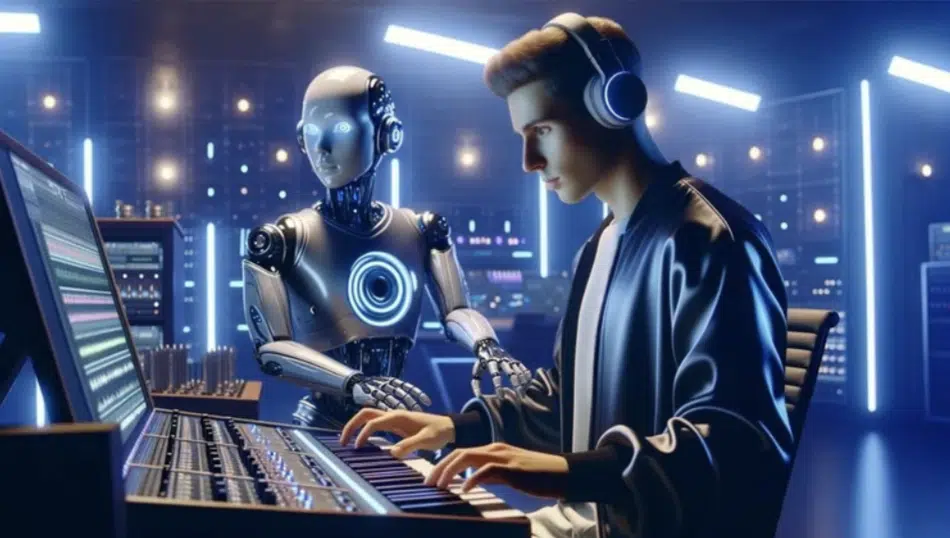
If you’re serious about staying in the game, you’ve got to think long-term when it comes to AI-generated content and how it fits into your overall plan.
A smart move is building your own library of reusable AI-generated stems, loops, or vocal samples you can pull from when you’re on tight deadlines.
That could look like saving every AI melody you generate (yes, even the ones you don’t use right away), then tagging them by tempo, key, and vibe.
This way, you can grab exactly what you need when the pressure’s on.
At the same time, learning about platform policy changes can keep you from running into surprises with monetization.
Some streaming platforms may start requiring disclosure about how your track was made, whether it’s mostly human-written, AI-generated, or somewhere in between.
So, being ahead of that can protect your uploads from takedowns or revenue issues, which is super true when it comes to streaming platforms like Apple Music or Spotify.
For example, if your song is flagged as fully AI-generated music, it might not make it into editorial playlists, which can seriously affect your reach/royalties.
Remember, the more you systemize your music creation process with AI music production, the easier it becomes to scale without burning out.
Make sure to set up templates, save MIDI you like, organize your folders 一 all that stuff frees up your brain for actual creativity.
That kind of strategy is what really defines the business side of AI in music, especially when you’re trying to build a sustainable, full-time creative career.
-
How to Blend AI Music Production & Human Creativity (Big Game-Changer)
The best results come when you use AI in music production as a co-creator, not just a shortcut, because that’s where things get too robotic and not intriguing.
Basically, AI can quickly give you structure and ideas, but without your input, the result usually feels flat or overly predictable, like background music that just blends in,
For example, you can generate five melody ideas using AI, then resample or rework just one into something that feels 100% your own.
Maybe you time-stretch it, run it through granular effects, chop it into new phrases, or even flip the MIDI into a new key and layer it with synths…
Now it’s got your unique sound and identity.
That’s how you turn AI-generated music into something that still needs a human touch to hit emotionally 一 adding emotion, dynamics, and unexpected choices.
Maybe that means something like:
- Pitching the melody up an octave for the second hook
- Dropping in a surprise harmony line
- Pulling the drums completely for eight bars just to create space
These are the types of decisions that separate average AI tracks from standout ones, and you definitely have to take that into consideration moving forward.
You can also train AI to follow certain chord patterns or structures, but it still needs a human artist to make it feel alive.
Otherwise, you’re just stacking patterns that sound technically correct but don’t move anyone, and in the music industry, emotional connection is absolutely everything.
In the music world, it’s really an art form to know when to rely on tech and when to trust your gut, there’s no two ways about it.
This balance is a huge part of the business side of AI in music and is what separates next-level music creators from cookie-cutter content.
Remember, the most mind-blowing tracks out there are simple but unexpected, and AI isn’t great at unexpected, so use that to your advantage as well.
Staying Ahead of New AI Music Tools/AI Technology
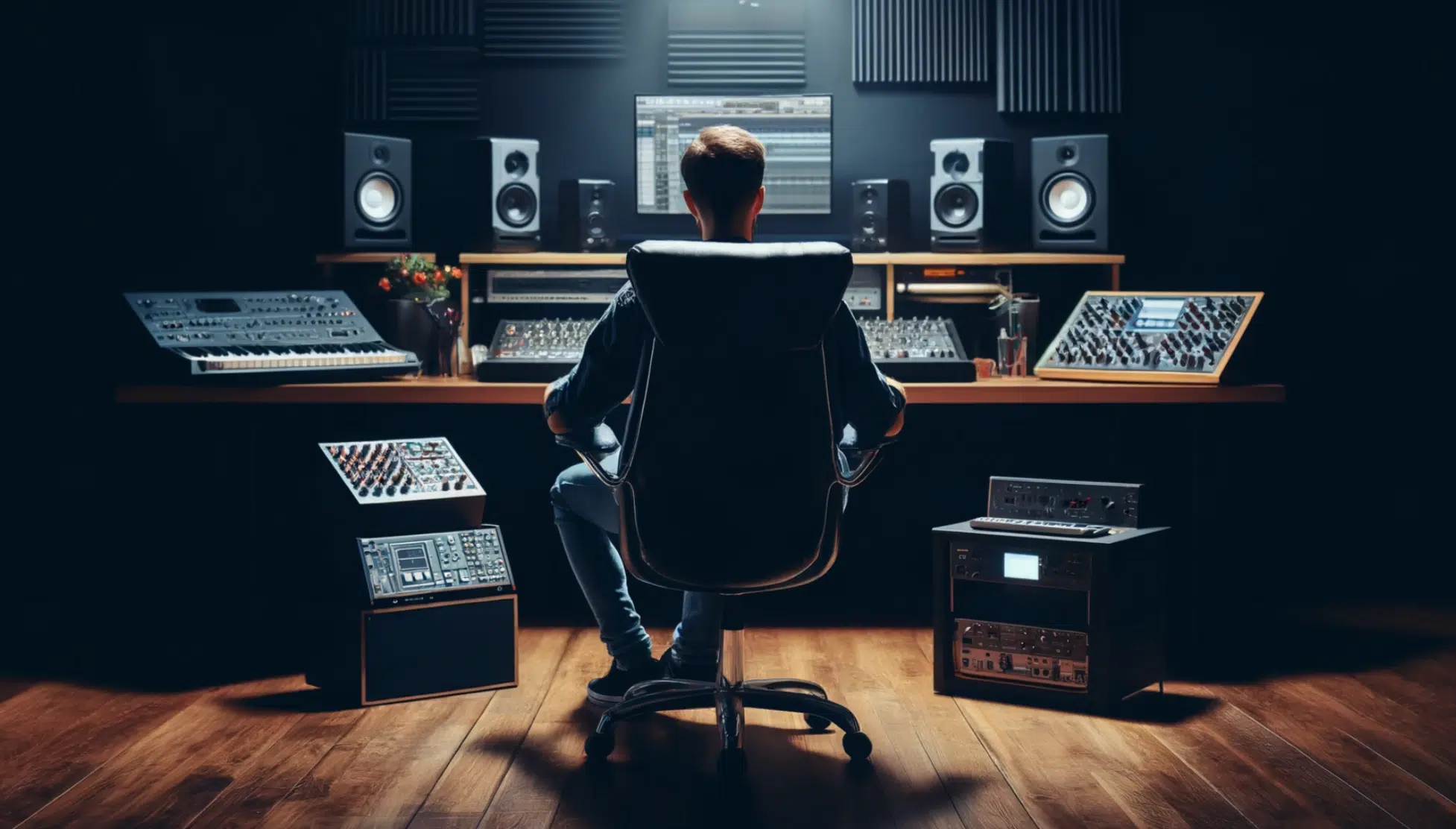
Because AI continues to evolve super fast (in regards to all music genres), the producers who stay current with AI technology are the ones who stay in demand.
Whether it’s a new plugin that can generate mix-ready stems or an update that improves melodic accuracy in AI-powered tools, keeping up gives you a much-needed edge.
So, my advice to you would be to stay tapped into the community and get ahead of the wave instead of catching it late…
That means joining Discord groups where devs and producers drop updates and workflow tips in real time.
Also, following AI devs on Twitter (especially those building tools for real-time stem separation, sample flipping, or arrangement automation) keeps your feed filled with real-life insights.
And watching behind-the-scenes videos from artists using AI music tools lets you see how the pros work AI into their flow without losing control of their sound.
That’s real knowledge right there people.
Many artists and producers sleep on this, but knowing what tools are trending can open up gigs, collabs, early beta access, or even sponsorships
Some producers got hired by record labels or sample companies just because they knew how to use emerging AI music tools better than the in-house team.
That kind of opportunity is where the real bag is, and it’s deeply connected to the business side of AI in music.
Keep in mind that being first is often more valuable than being perfect.
Staying sharp is just as important as staying creative, and it all ties into the business side of AI in music because innovation creates opportunity.
If you can be the one person in your city or scene who understands how to use AI-generated content to build faster, smarter, and more uniquely, you’re set.
The next decade of the music industry is going to be shaped by whoever adapts the fastest when it comes to music creation and AI-powered tools.
It doesn’t matter if you’re producing for sync, selling loop kits, working with human musicians, or running a label (the shift is happening whether you’re ready or not).
So, my final advice to you would be this 一 whenever you’re creating music, always look for ways to take advantage of artificial intelligence.
Believe me, this is just the beginning, and if you stay ready, you won’t have to get ready when the next wave hits!
Final Thoughts about Music AI
At the end of the day, the producers who really win are the ones who take the time to understand the business side of AI in music.
Not just how to create with it, but how to build a future with it.
Whether you’re making beats, selling sample packs, or getting placements, AI is opening new doors every day.
But tools alone won’t make you stand out 一 it’s all about how you use them, and how you position your work in the music industry.
This is your chance to take control of your sound, your brand, and your career in a way that didn’t exist before.
So stay curious, keep building, and keep learning every part of the business side of AI in music because this is only the beginning, trust me.
Until next time…






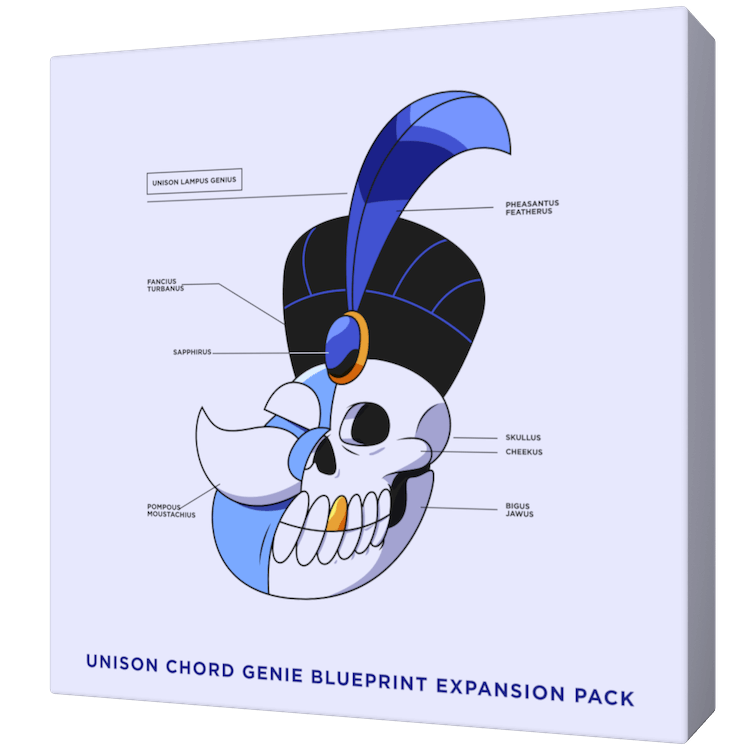
Leave a Reply
You must belogged in to post a comment.